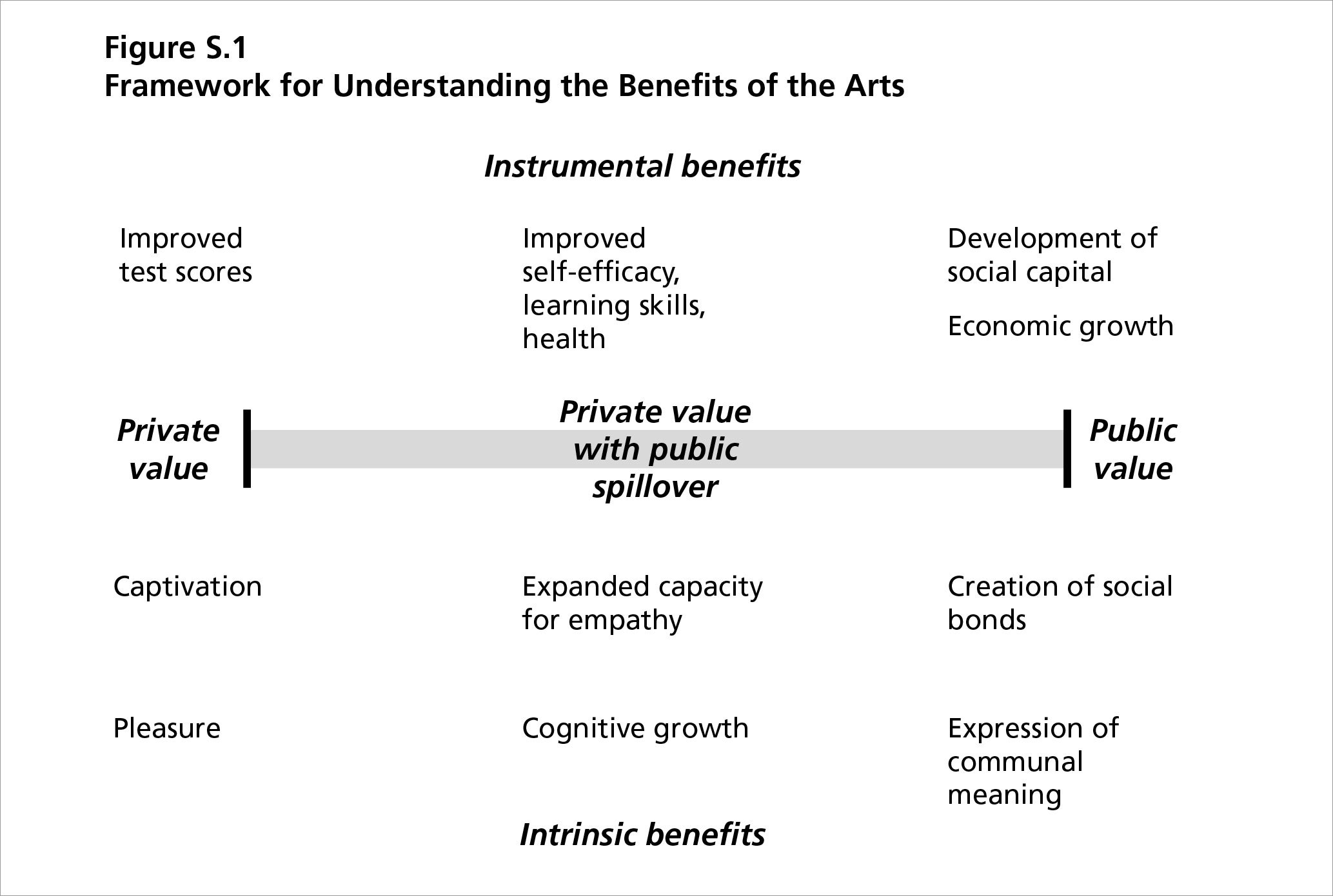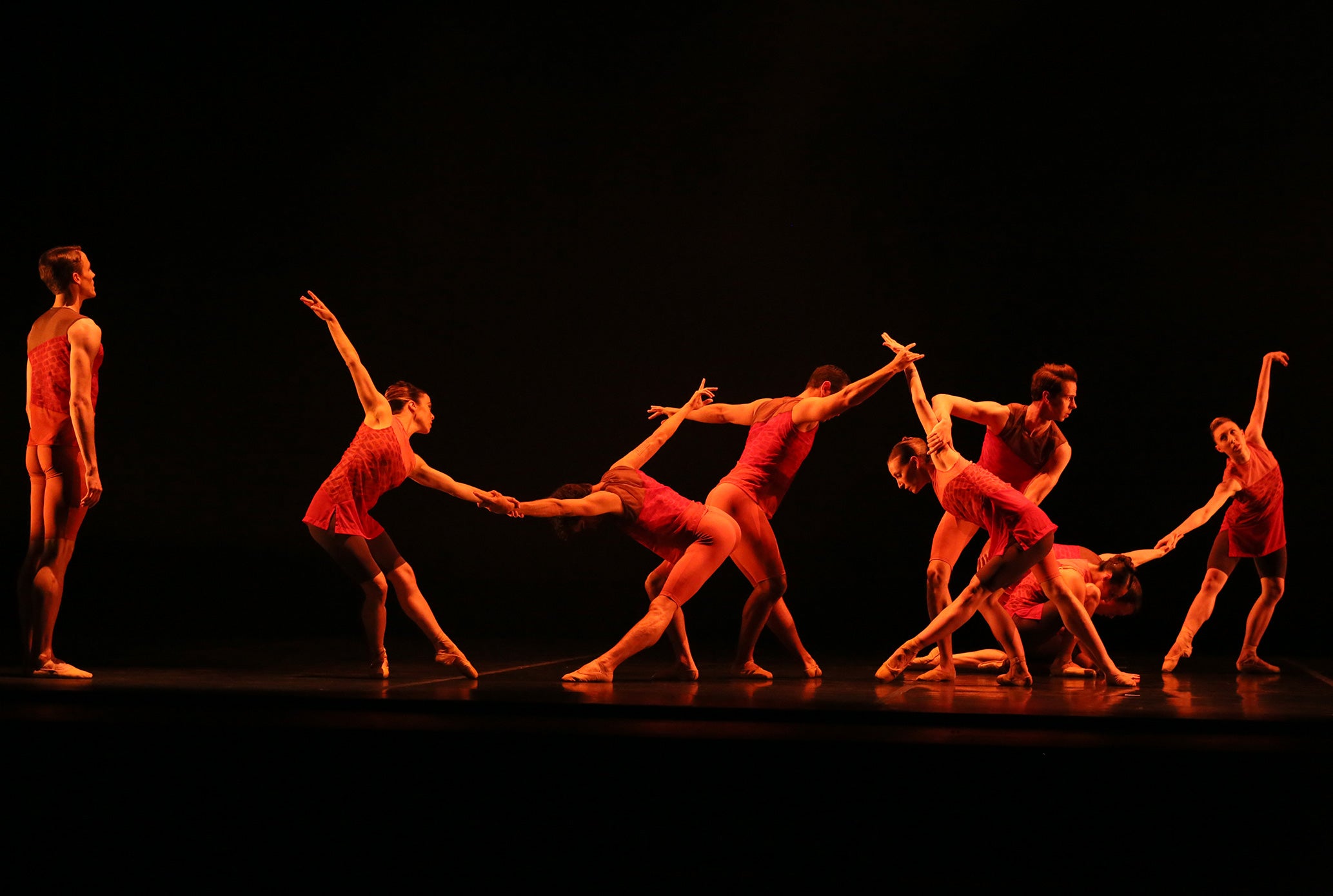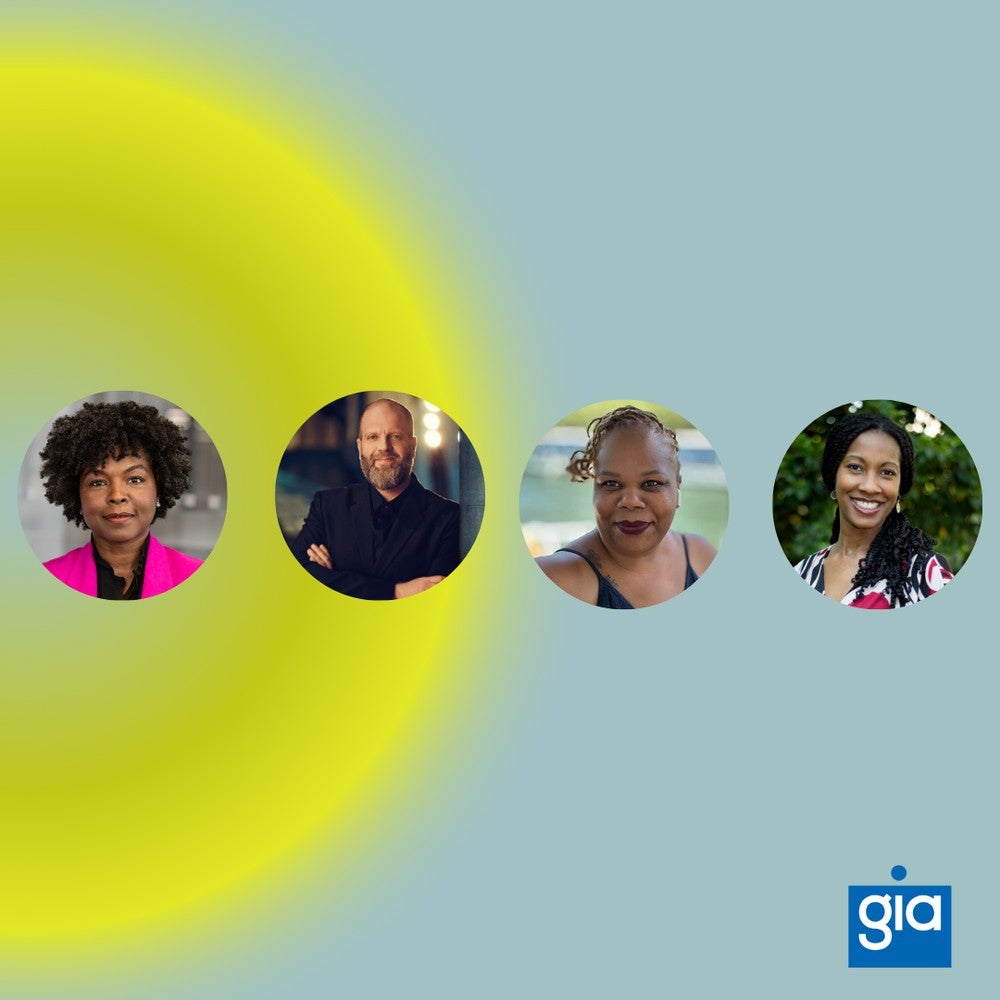Support for the arts was once a prosaic topic in America’s national discourse. Politicians, educators and policymakers generally agreed that the arts are an essential source of personal enrichment worthy of institutional investment.
That consensus began to unravel in 1970s and 80s, however. “Culture wars” and fiscal austerity saw once-cherished programs, including those related to the arts and arts education, slashed from government budgets. It was no longer enough for arts advocates to point to the intrinsic benefits of the arts—the personal joy and enrichment people draw from the arts. They increasingly turned to arguments based on instrumental benefits—the effect of the arts on quantifiable societal indicators such as economic growth and student test scores.
Despite this change in focus, arts funding has continued to decline. Recent years have seen proposals to eliminate federal funding to the National Endowment for the Arts and deep cuts to arts education in high-poverty schools in cities such as Chicago and Philadelphia.
Researchers from the RAND Corporation offer an alternative argument that may help build the case for arts funding in Gifts of the Muse: Reframing the Debate About the Benefits of the Arts. The study’s authors scoured through decades of literature and found shortcomings in these arguments that focus on instrumental benefits, including some shaky research methods, vague connections between causes and effects and a failure to account for the opportunity costs of investments in the arts. Further, the authors suggest, a focus on instrumental benefits limits the debate to the supply of the arts. By ignoring the intrinsic benefits that compel people to build lasting relationships with the arts, arts advocates may fail to make a case for the essential job of stimulating demand for that supply.

The authors offer a number of ideas to bring more nuance and greater clarity to the debate about the arts:
- Advocates and policymakers must look beyond one-dimensional discussions that weigh intrinsic against instrumental benefits. They must also consider public intrinsic benefits of shared artworks, such as their ability to unite people around particular causes, ideas or emotions.
- Arts advocates must develop a clear, common language to discuss intrinsic benefits, which can often be hard to elucidate.
- Increased research is necessary to better understand the benefits of the arts. The flaws in existing literature about instrumental benefits must be addressed and intrinsic benefits must be better understood.
- Schools and community organizations need greater investment to help them expose children to the arts. Lasting relationships with the arts must begin early, researchers suggest; children who develop interest in the arts are more likely to seek them out—and hence derive benefits from them—as adults.
At Wallace, we’ve been working to help address some of these recommendations. In 2014, we launched the Youth Arts Initiative, a multi-year effort to help the Boys & Girls Clubs of America develop strategies to offer a high-quality arts education to urban youth. An interim evaluation of the initiative has shown that it is possible for clubs to put in place the basic elements of such an education; we are now working with Boys & Girls Clubs to devise ways in which they can do so affordably and sustainably.
We also support arts organizations as they work to build audiences so more people can experience the intrinsic benefits of the arts. Our latest focus in this area is the Building Audiences for Sustainability Initiative, a six-year effort to determine whether 25 arts organizations can broaden, deepen or diversify their audiences in ways that also contribute to their financial health. The initiative builds on the Wallace Excellence Awards, a previous effort that produced two practical guides to help build audiences: The Road to Results: Effective Practices for Building Arts Audiences, and Taking Out the Guesswork: A Guide to Using Research to Build Arts Audiences.
We don’t yet know if these efforts will succeed. But if they do, we hope they will offer models to help youth-serving organizations introduce young people to the arts and established arts organizations nurture such interest so the arts, and their intrinsic benefits, can thrive.




